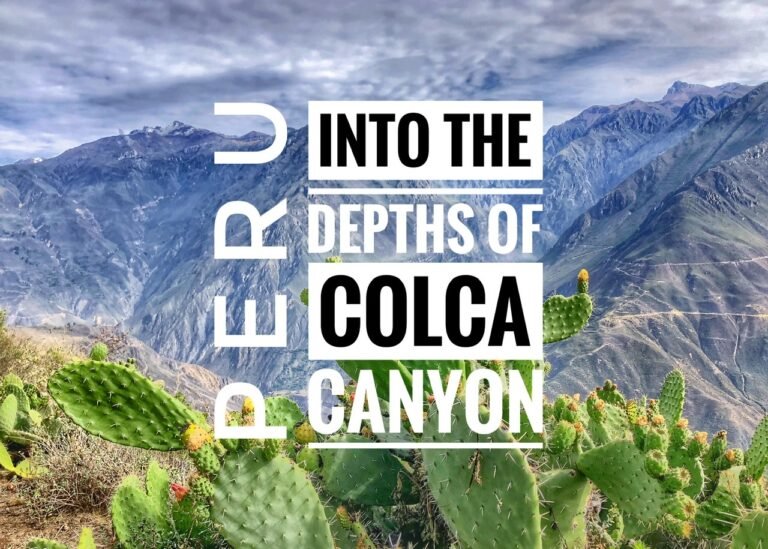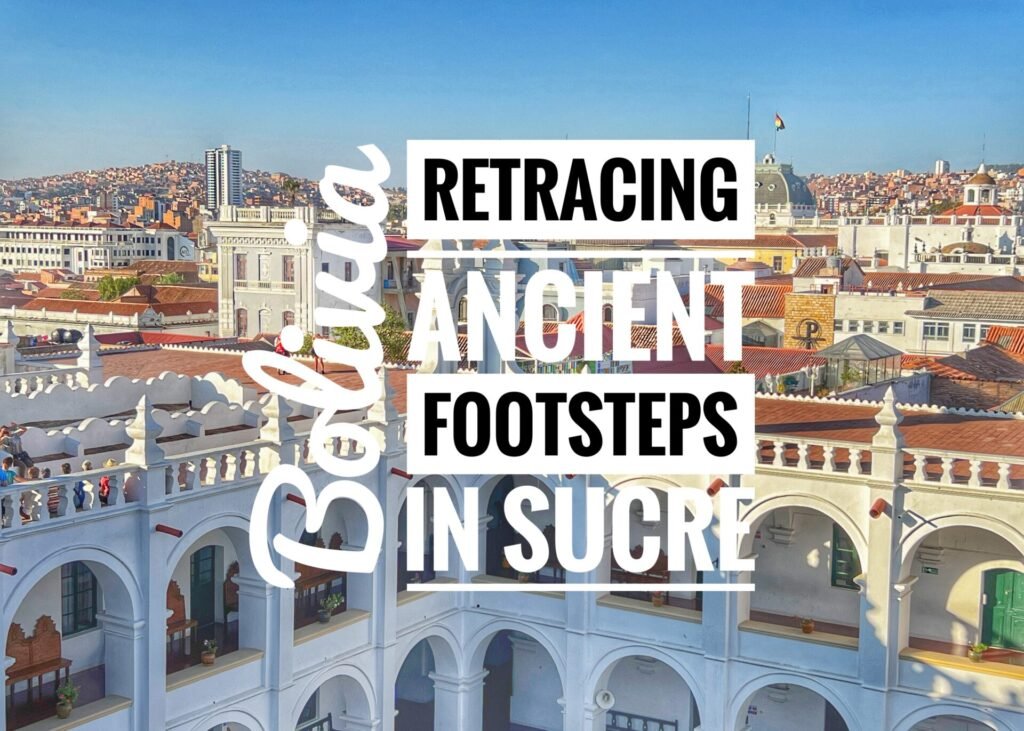
Getting There & Our Accommodation
From Samaipata, there was really only one way to our next destination…an 8 or 12 hour overnight bus, depending on who you ask. ($19/each) An overnight bus is practically the norm for us these days, which really isn’t an issue, particularly because they’re super comfortable in Latin America, and they save on a night of accommodation. What we don’t enjoy is being lied to about our arrival time. Grrr… 😠

There are evidently only two “agencies” that book bus tickets in advance to Sucre. We use this term loosely considering it’s a one-man show, Frank, with a what’s app number who also runs a laundry mat. (There is no formal bus station in Samaipata.) Frank is located across from Hostal Andoriña. He is clearly labeled by the sign that says… “We sell bus tickets to Sucre.” We knew we were overpaying a bit, but the nice thing about this agency is they take you to the side of the road and stand with you to make sure you get on board a bus flying by Samaipata on its way to Sucre. If you don’t have this local support, it seems it would be very easy to miss.
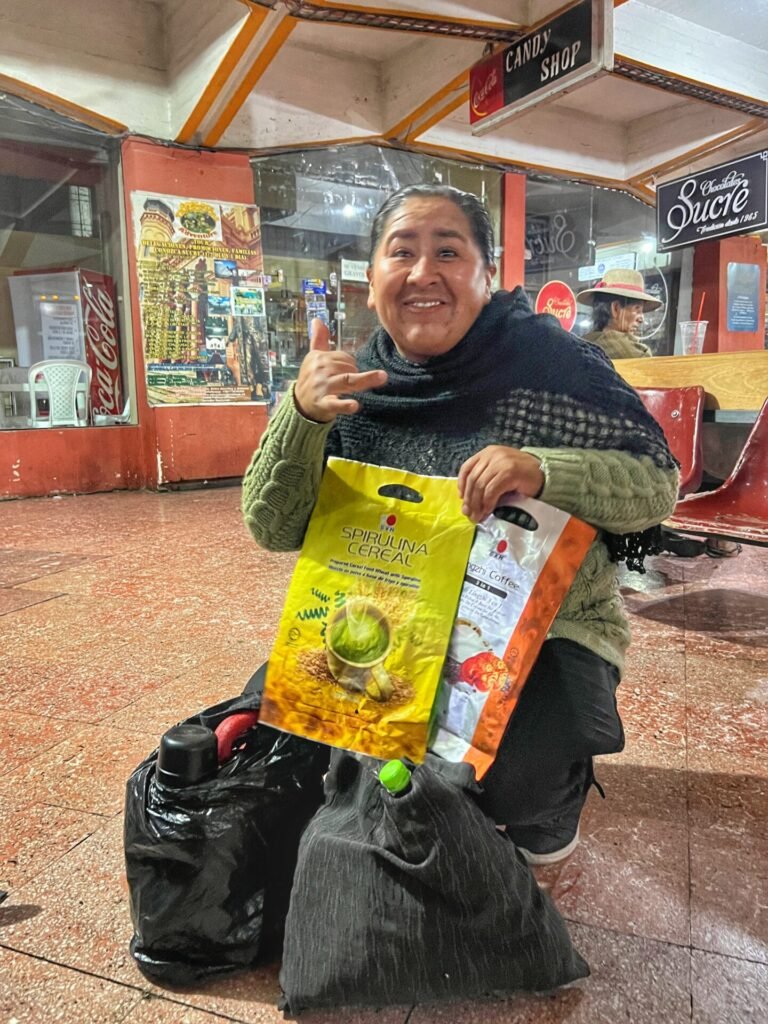

Anywho, the reason we were annoyed (and therefore wouldn’t recommend him) is Frank blatantly lied to us and said the bus would be arriving to Sucre at 8. So imagine our elation when we woke up from our Melatonin-induced slumber pulling into the completely desolate Sucre station at 4 am. Fortunately, this nice coffee lady woke up at god knows when to save our morning. One would think she’d be pedaling cheap nasty bus station coffee, but no, she took much pride in her work and had fine Bolivian RG Reishi Gano, “a type of coffee that helps detoxify the body and eliminate toxins and promotes the proper functioning of the cardiovascular system,” according to her pamphlet. And this coffee was leaded too, which meant Greg’s morning started getting a little bit brighter.

This is how many people flooded into the waiting room between the hours of 4-6, when the sun started to arise. At least four more buses other than our own, all in the same predicament. Seriously! Why are there no day buses?! Duh.
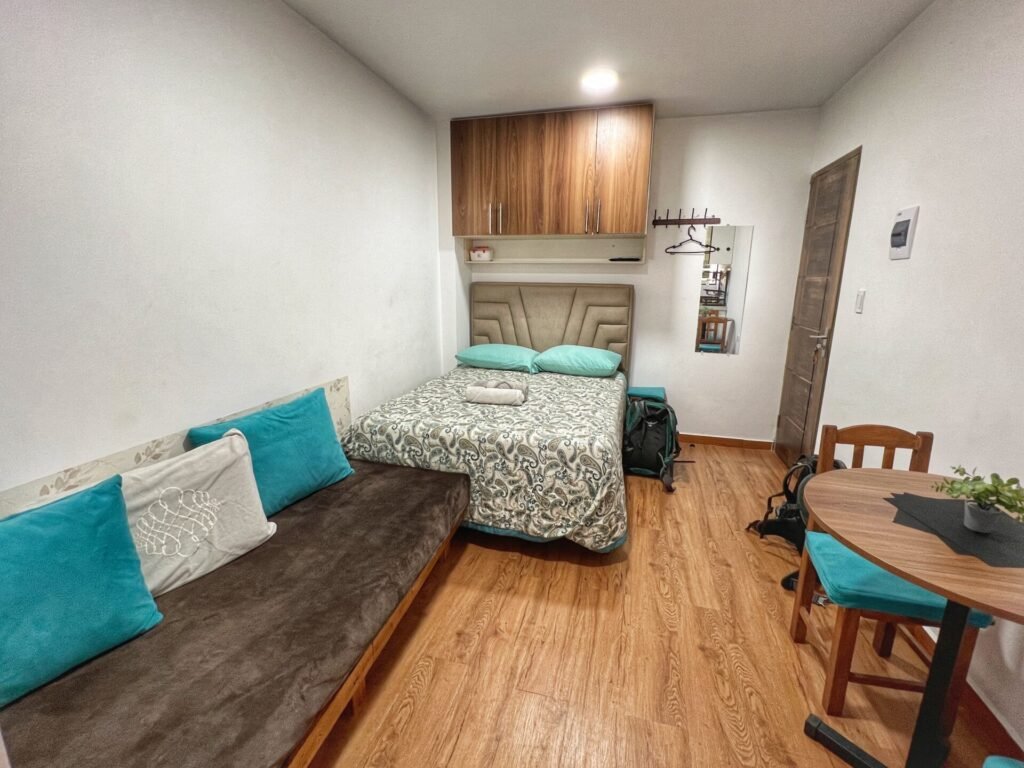

Of course we had to occupy ourselves until 9 when we could finally, and fortunately early, check-in to our studio apartment for 9, turned 12 nights. It costs $19.50/night and was about a five-minute walk from the center square. Our kitchen and laundry area (hand wash tub.)

We are loved the fact that we were one block away from the Central Market. This was our first load for about $10.
Exploring Sucre

The UNESCO World Heritage city of Sucre is a landscape of stunning whitewashed colonial buildings accessorized by red roof tops, lofty bell towers, idyllic courtyards, and rolling mountains surrounding its facade. Although this it is known as Bolivia’s “White City,” the name has nothing to do with sugar. Sucre, the true capital of the nation, was actually named in honor of the revolutionary leader Antonio José de Sucre. All this, plus sublime weather, and it’s easy to see why so many backpackers and long term travelers decide to stay awhile…us included…

Sucre, founded in 1538, is the quintessential heart of Bolivia and while La Paz is the governmental hub, Sucre is recognized in the constitution as the nation’s capital because it is here where independence was proclaimed. It’s easy to fall under the spell of Sucre from the rooftop of Convento de San Felipe, which more than explains the nickname “White City of the Americas.” Interestingly, this is the third city proclaimed “white city” we’ve visited in South America. The other two are in Popoyan, Colombia and Arequipa, Peru. They’re all gorgeous, but we’d have to give the edge to Popoyan.


The inner courtyard of the convent, built in 1792. It cost 16 Bolivianos to enter, or about $2.30 each. It is open only from 2:30-5:30 Monday through Saturday. We chose to go at 5 to get the best light, which was well worth it.



It had one of the most captivating rooftops we’ve seen since Leon, Nicaragua, and is a beautiful place to soak in the city.
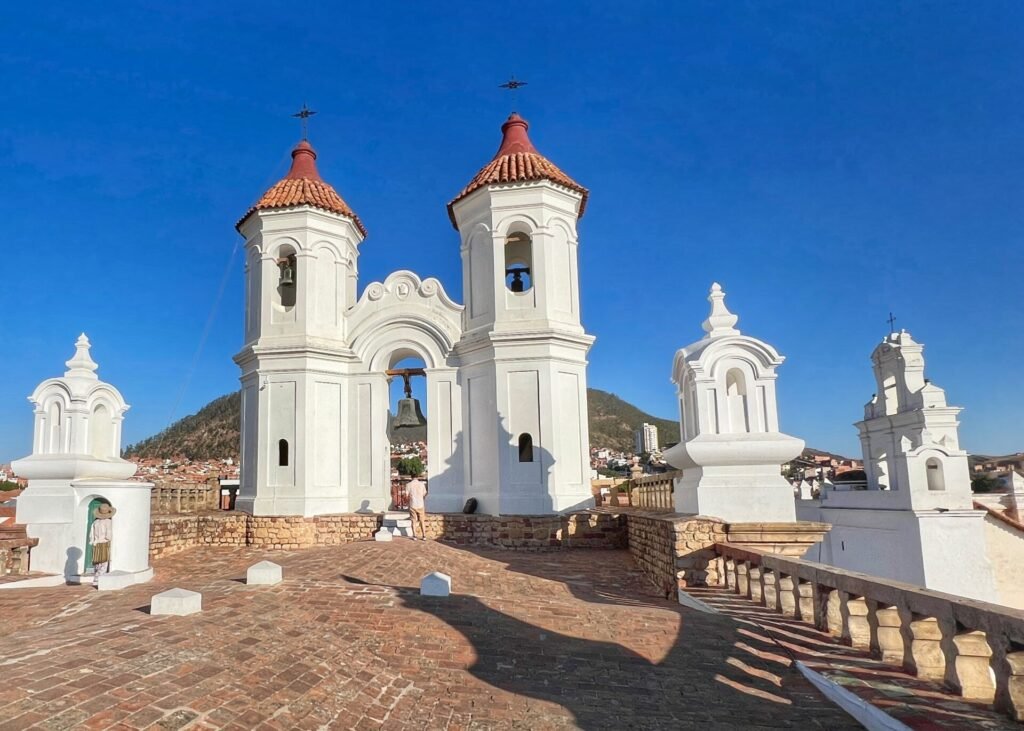
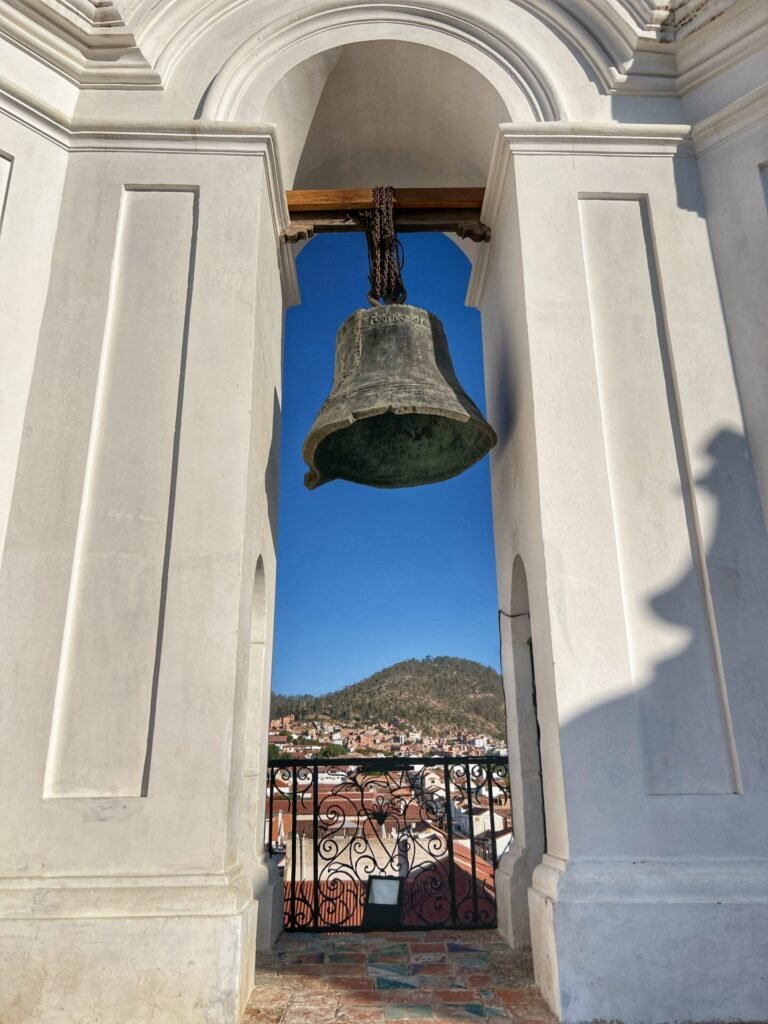

Through the bell gap, you can see the spiritual destination of Cerro Churuquella, which we would climb later in the week.

Although the building now serves as a parochial school, in the days when it served as a monastery, you can still see the stone benches the monks used for meditating.

A Bolivian rendition of the Last Supper, including…
- a server off to the right side because Jesus was obviously powerful enough to have “help”
- a dog representing good, and a cat representing evil under the table
- a main dish of rabbit, next to Jesus
- the man on the front right with the red face represents Judas, who betrayed Jesus

Moving on, the Plaza de La Libertad Obelisk symbolizes the country’s independence from Spain in 1825.


Another architectural jewel called Church of Saint Dominic.
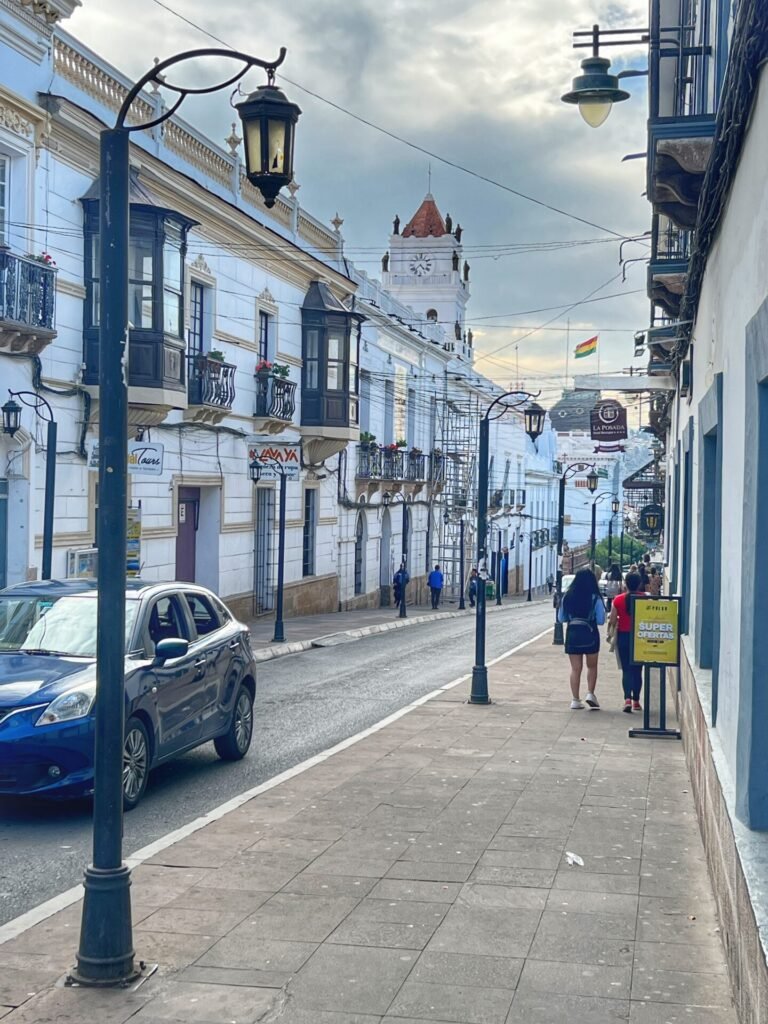


Streets of Sucre. Normally they are unfortunately very clogged with traffic and buses belching black smoke, one of the less nice things about life in this developing nation. It’s not particularly nice to walk in, but we did love the things we saw, like the balconies. Some of them were incredibly extravagant and reminded us of the ones we saw in Malta.


Mandy watching the kids play futbol in front of the Recoleta Monastery, which is a more pleasant walk up the hill.

Have we mentioned EVERYONE plays futbol in Bolivia? Including dogs in dragon costumes! 🤣


The panoramic view of Sucre from the monastery, which seemed like a popular place for everyone to enjoy the beautiful weather.

Returning to the monastery another morning for a completely different vibe.


Heartbreakingly, poverty also runs rampant in the country. And most of them seem to be very elderly or disabled. 😞

The indigenous art museum is a wonderful place to see extraordinary local weaving.


Heading back down from the monastery. According to Lonely Planet, the locals must paint their houses white once a year or they risk getting fined. And as we arrived back to the main square, we were able to catch the sunset glow.

A local university

The first presidential palace of Bolivia in Plaza 25 de Mayo.
Witnessing Dinosaur Footprints
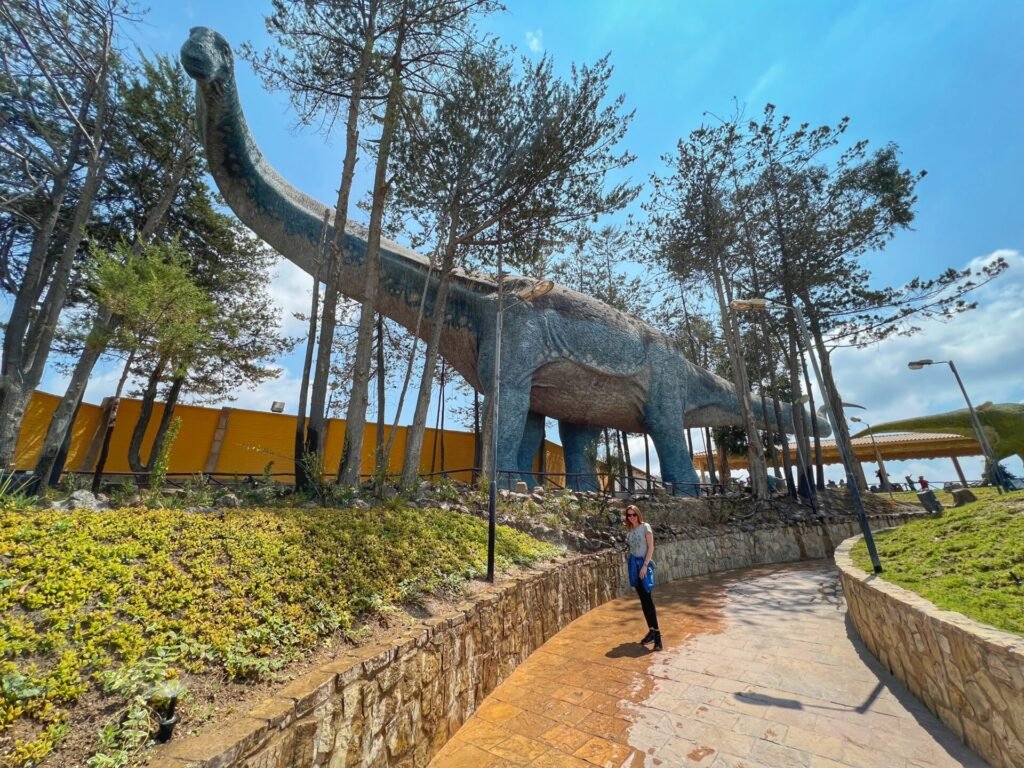
When you learn about dinosaurs as kids, you think of them as really cool and mythical beasts that once roamed the earth. But when you come face to face with their real footprints as an adult, particularly grazing the side of a soaring cliff, a holy crap awakening is inevitable. These giant reptiles actually ruled the planet and plodded amongst the terrain we live on today.
El Parque Cretacico, or Cretaceous Park is the largest paleontological site in the world and features more than 12,000 footprints of 294 species. It is one of the most mind-blowing things we’ve ever seen.
The park is located about 30 minutes northwest of Sucre and in addition to the real deal, you get lots of life-sized dinos that we’ve all experienced in theme parks or museums.

But the cliff measuring 70 meters high and 1 kilometer long blanketed with 65.5 to 80 million year old dino tracks is what takes the cake.


There are four different types of prints on the cliff side, and everyone would have squashed Mandy in an instant.



There are several ways to get to the Dino park and the easiest seems to be the 15 Boliviano ($2.20) incredibly touristy red double decker, Dino Bus. Getting info about all this is not so simple, however.
Firstly, the parks’ website is not working. Secondly, blogs seem to offer slightly different info depending on which one you look at. Thirdly, there is no sign with information anywhere in the main plaza where it supposedly waits.
We scouted it out the day before we wanted to go and found out the first bus comes at 9:30, which you need to be on if you want to catch the 12:00 tour. There are only two tours per day at 12 and 1, which is the only chance you have to go down in the quarry and see the prints up close, which we can’t imagine having missed.

Sucre takes its dinosaur fame seriously and even includes the critters on its roundabouts!
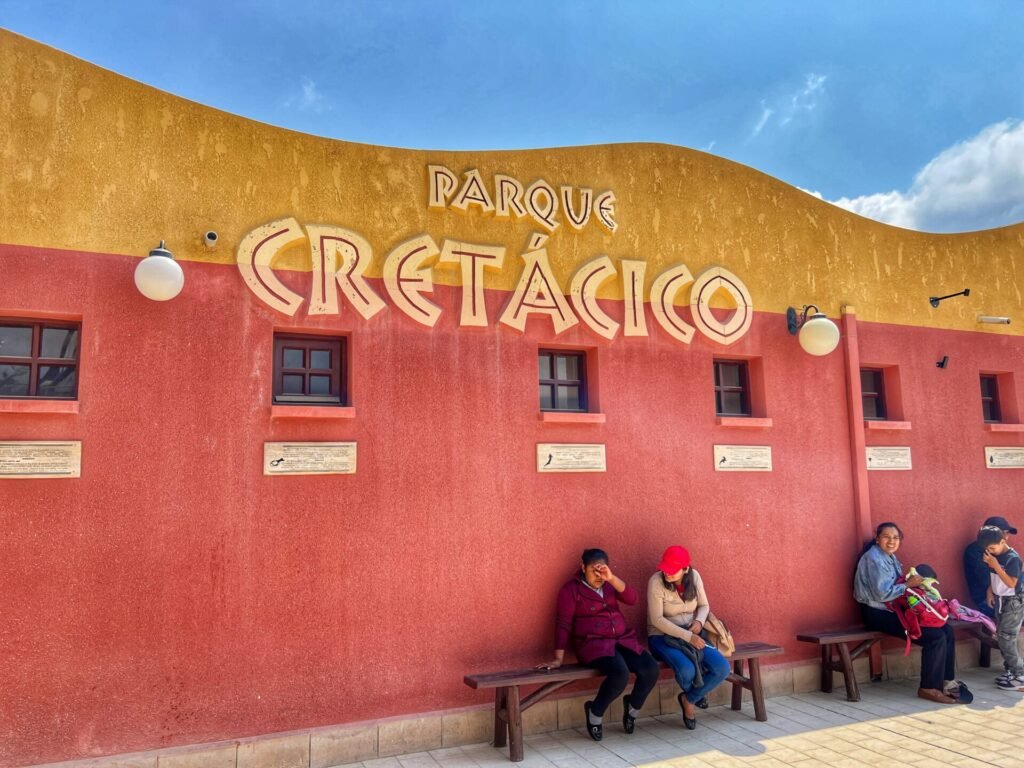

We arrived to the park at about 10:15 and paid our entrance of 30 Bolivianos each ($4.30). The quarry tour is included in the price.
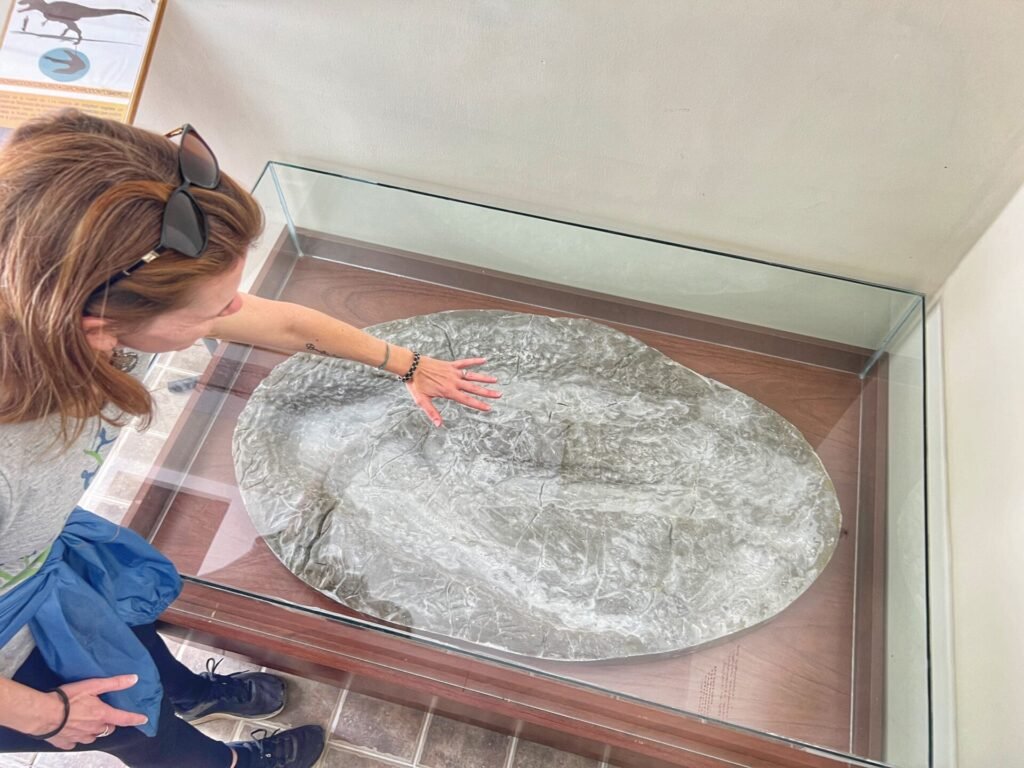

Before the tour, however, there is still lots to explore in the park museums and exhibits. Mandy holds hands with a teropod (carnivore) print found on this site while Greg said hello to his favorite dinosaur friend…the triceratops.

And of course we all know this star of Jurassic Park. But what was most eye opening was that this guy didn’t even exist in South America. He was a full-fledged northern breed. Because, consider, at that time, North and South America didn’t even touch.


That said, as we walked amongst the dinosaurs, it was interesting to learn about the southern hemisphere species that our North America focused education didn’t seem to mention. 🤣

It was also an amusing contrast to see the cartoony dinosaurs next to the massive steel equipment used in the quarry.

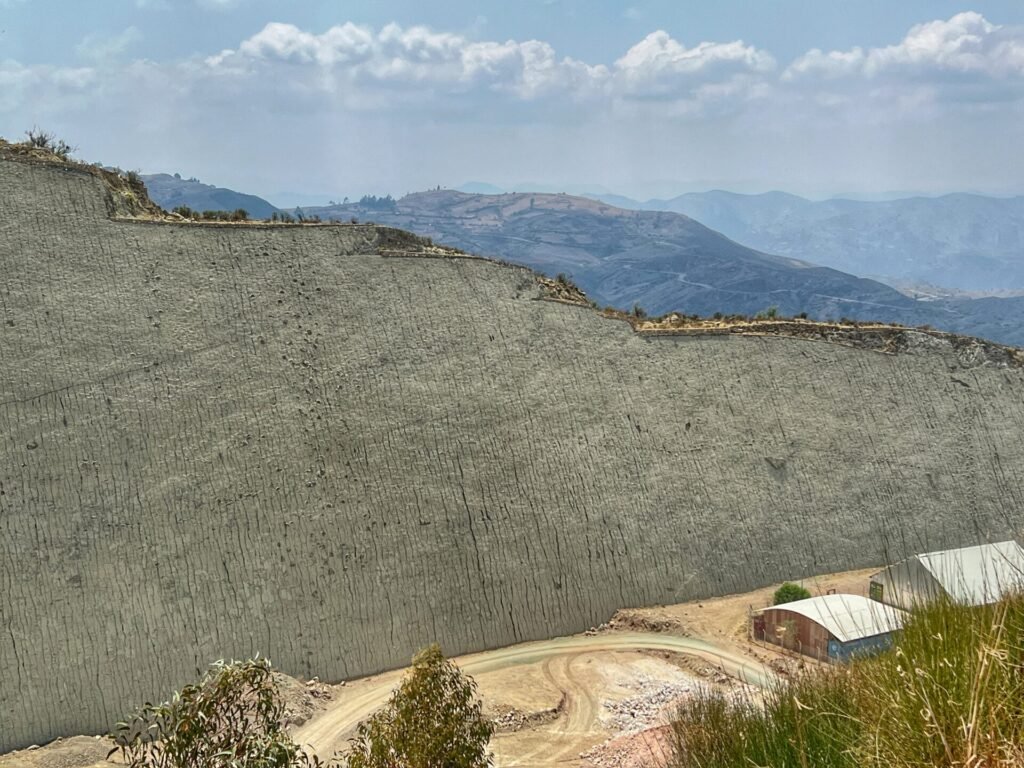
Approaching the cliff wall is simply astonishing when you start realizing how many prints you can pick out even from that distance. So, you might be asking one question at this point…

Why are the footprints vertical? Plate tectonics of course. The same ones that formed the Andes evidently. The fact is, 68 million years ago this wall used to be the floor of a shallow prehistoric lake bed when the Atlantic Ocean arrived from Argentina to Bolivia, but only as a narrow strip of sea in arid regions.

The dance floor of dino steps were only miraculously uncovered in 1994 by the cement company, even though they started mining here in 1959. Imagine the story the miner told his wife and kids that night at dinner!!

There are four types of tracks present: three herbivorous and one carnivorous. You can seem them illustrated in this graphic.

The Carnotaurus the southern brother to T-Rex, one of the most powerful carnivores. A big difference is he had some decorative little horns on his head.
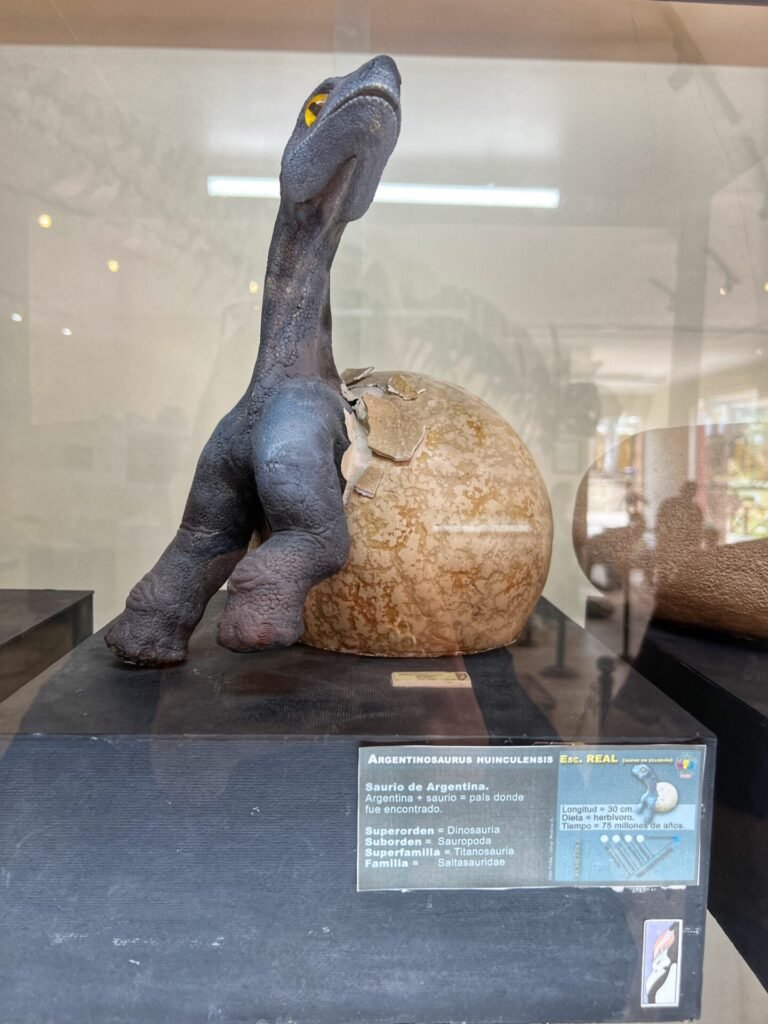
Another guy from south of the border? The cute baby Argentinosaurus.

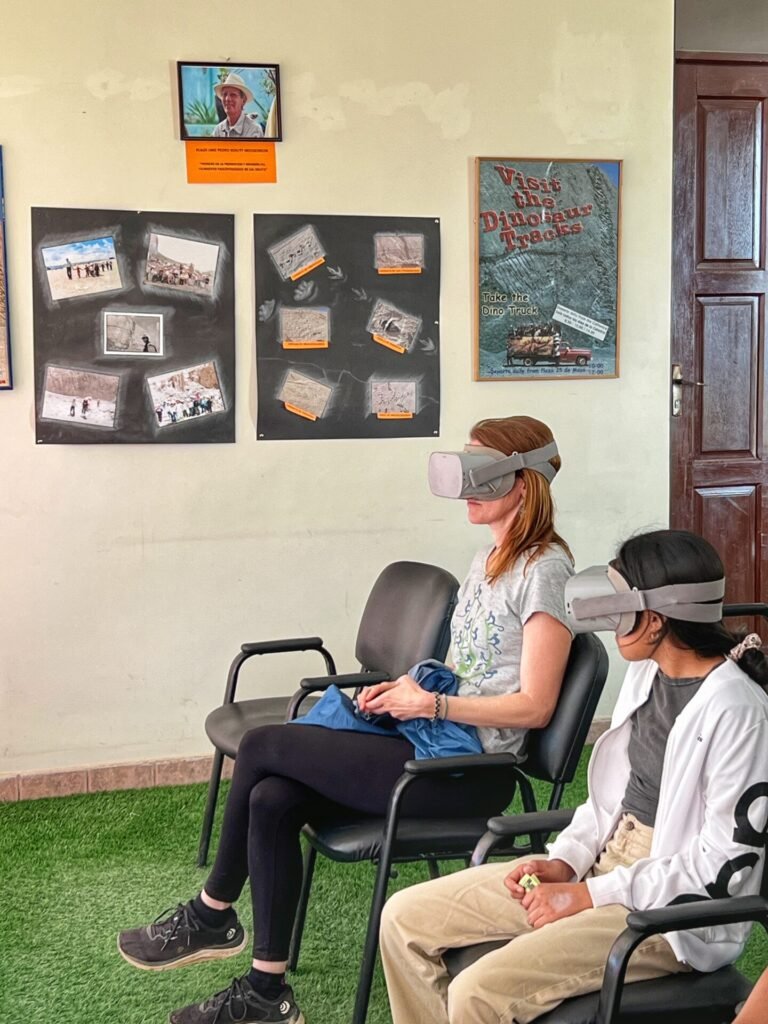
We had about an hour to kill before the start of the tour (the park mismanages their time slots terribly), so Greg tried to make the wall look prettier, while Mandy paid less than a $1 to be chased by some dinosaurs in a virtual reality experience.


Finally, at 11:55, it was almost show time and we got outfitted with our cool hard hats and head down into the quarry, which was on a steep path about a 1/4 mile in length. Our English and Spanish speaking guide, Diego, gave us the run-down of the tracks we would see, as well as the rules (stay with the group, keep on your helmet, and don’t touch!!)

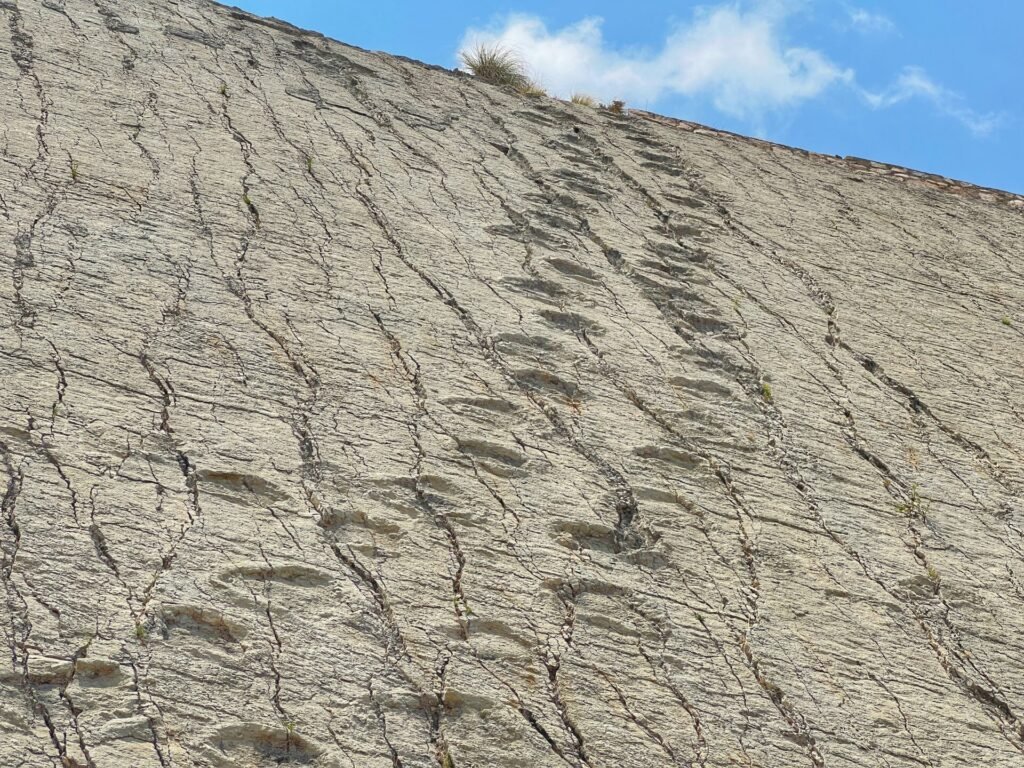
Getting this close to the prints was simply other worldly. The power of nature is funny. You don’t look at mountains and think “wow! That used to be on the ground.” But when you see footprints like this it really makes you ponder.


Diego illustrates how the prints were formed using lots of fun friends


Ornitopod tracks are truly unbelievable. It makes you feel so insignificant in space and time.
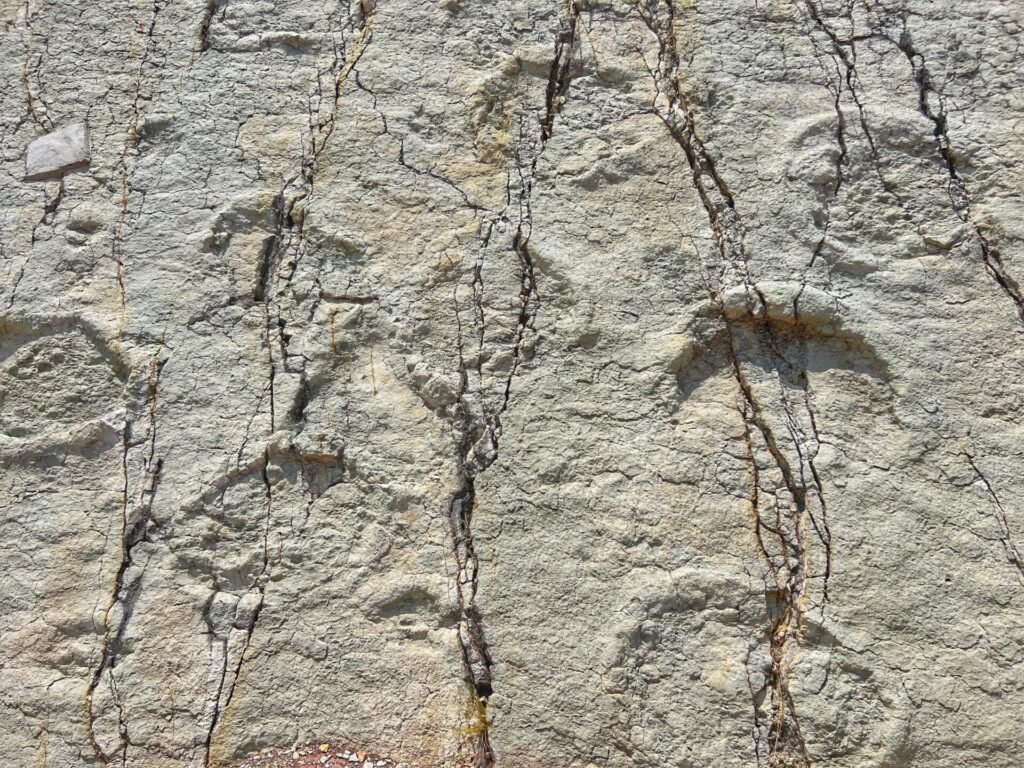

Up close with sauropod tracks. Here you can see the layers of earth that were found. In each layer has been found different types of tracks from different eras. Each layer in fact remarkably represents around two million years.

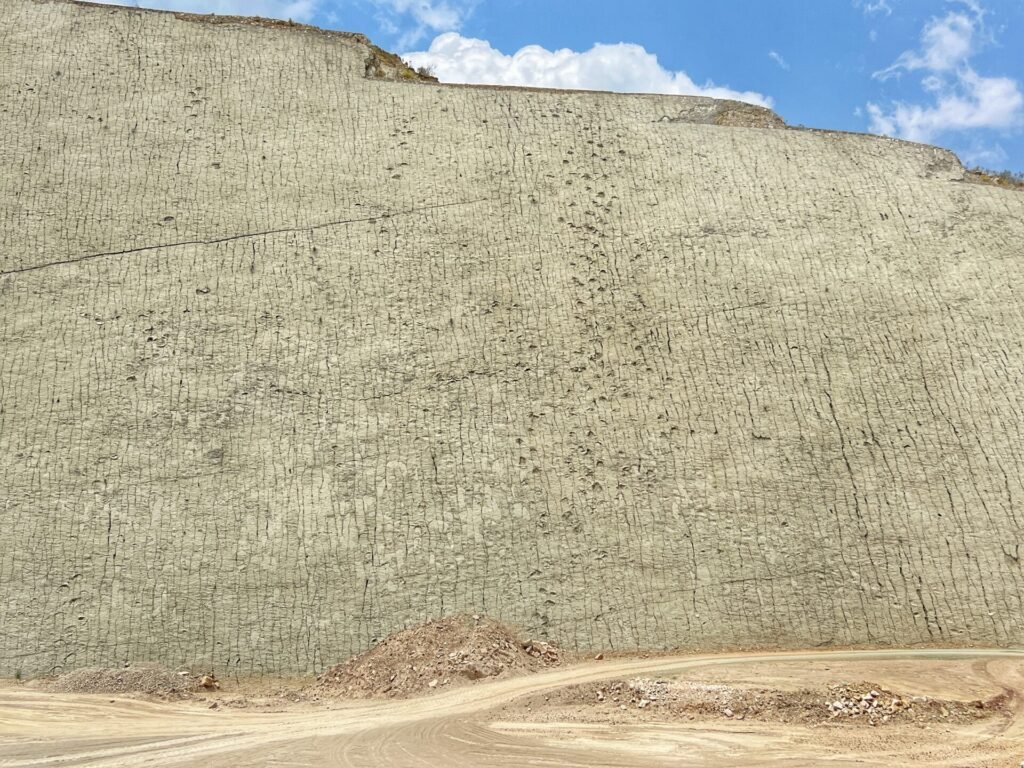
Absolutely one of the most astonishing things we’ve ever seen. Holy crap!!!
Life in Sucre
Life in Sucre certainly had its ups and downs. Ups included living in a very beautiful city, access to the central market out our door, ample exploration and conveniently bumping into our Dutch friends who had just started their South American backpacking adventure in Bolivia.
Downs included pollution, crowds and getting knocked down for three days with food poisoning, the first we’ve had since India in 2019. Because of this food poisoning, subsequent tummy troubles and the rain, we also sadly missed our opportunity to hike the Cordillera de los Frailes, which we had really been looking forward to.

An unnecessarily complicated cross walk in the main square. No one seems to understand it, including the locals and we’ve seen multiple people almost get hit, including ourselves.

Because why wouldn’t you have a dino pay phone in Dino Land?

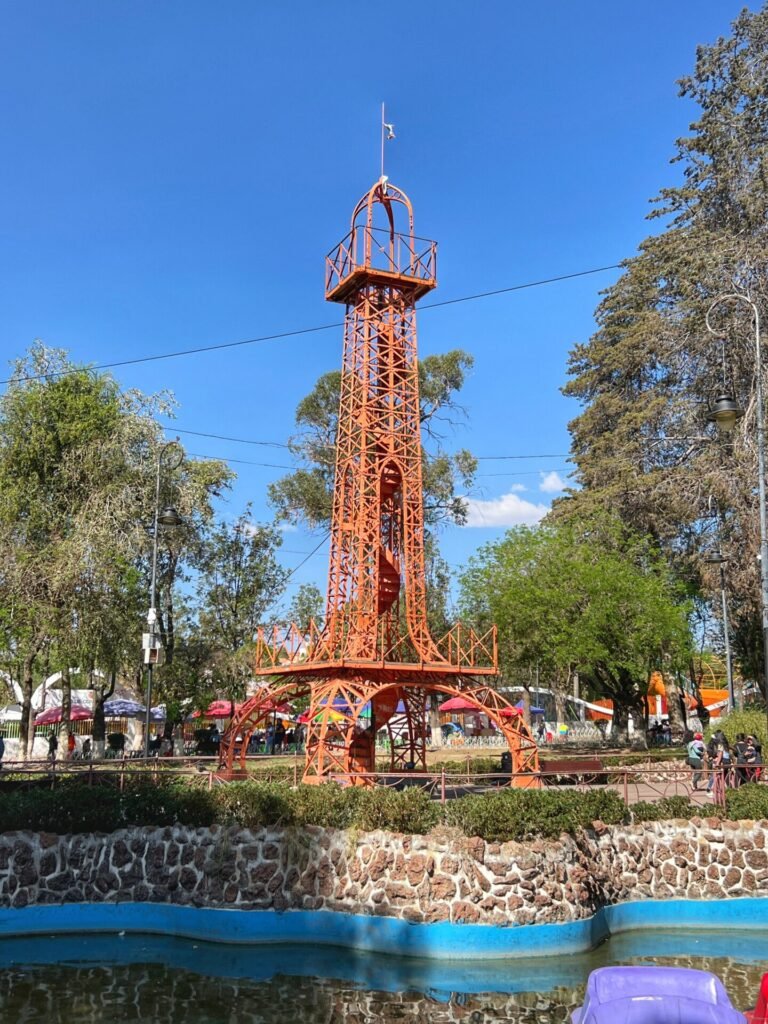
We went to Simon Bolivar very regularly because it was only a few blocks from our apartment, which is entered through a grand pearly gate. Bolivia is of course named after Bolivar, who liberated the country from Spanish rule and became its first president and the name of its currency. (Bolivianos) Although the park definitely doesn’t honor Spain in any way, funnily it pays homage to France in the form of a mini and gaudy orange Eiffel Tower. Interestingly, it was created by Gustav Eiffel himself in 1909.


Anyone can climb this extreme safety hazard to the top whenever they want and for free. Check out that hole! US lawyers would be foaming at the mouth.


The view of the park from the top. It’s super steep!

In another section of the park, there is a giant playground, which naturally is covered in dinosaurs, including this dreamy slide where you tumble from a brontosaurus bum.

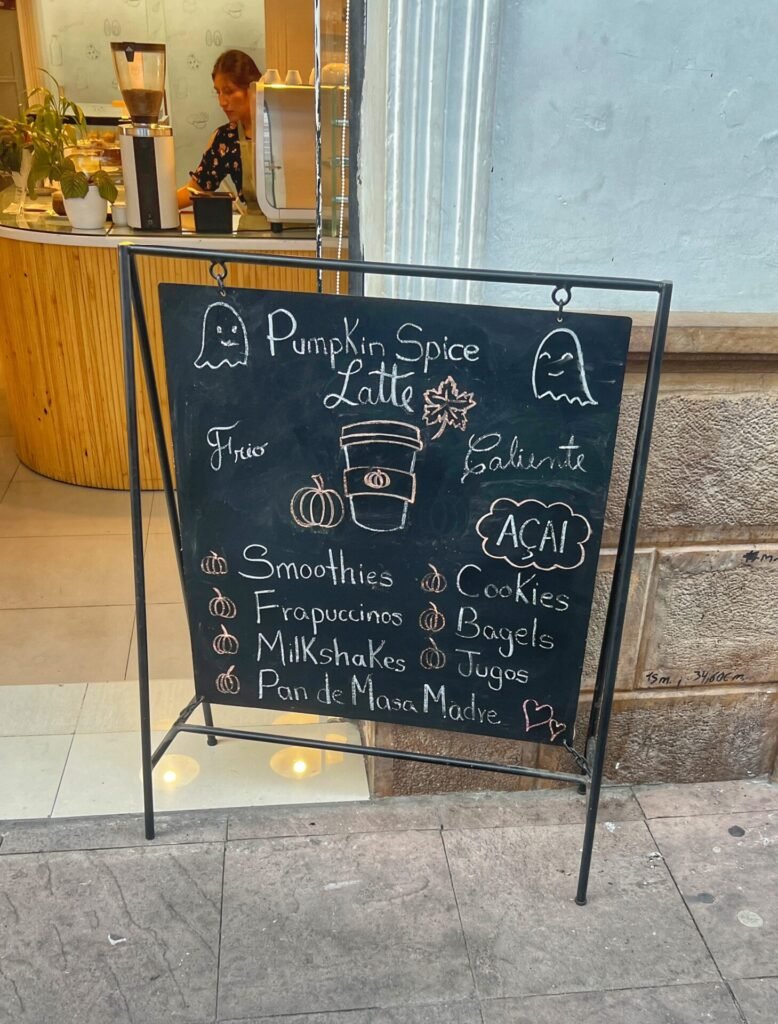
And we found it again!!! Yes, believe it or not, there’s açaí under that mound of sugar. And at $2 it’s definitely a fraction of the price as in Brazil! In other sugar news…they’re marketing PSLs in Bolivia.

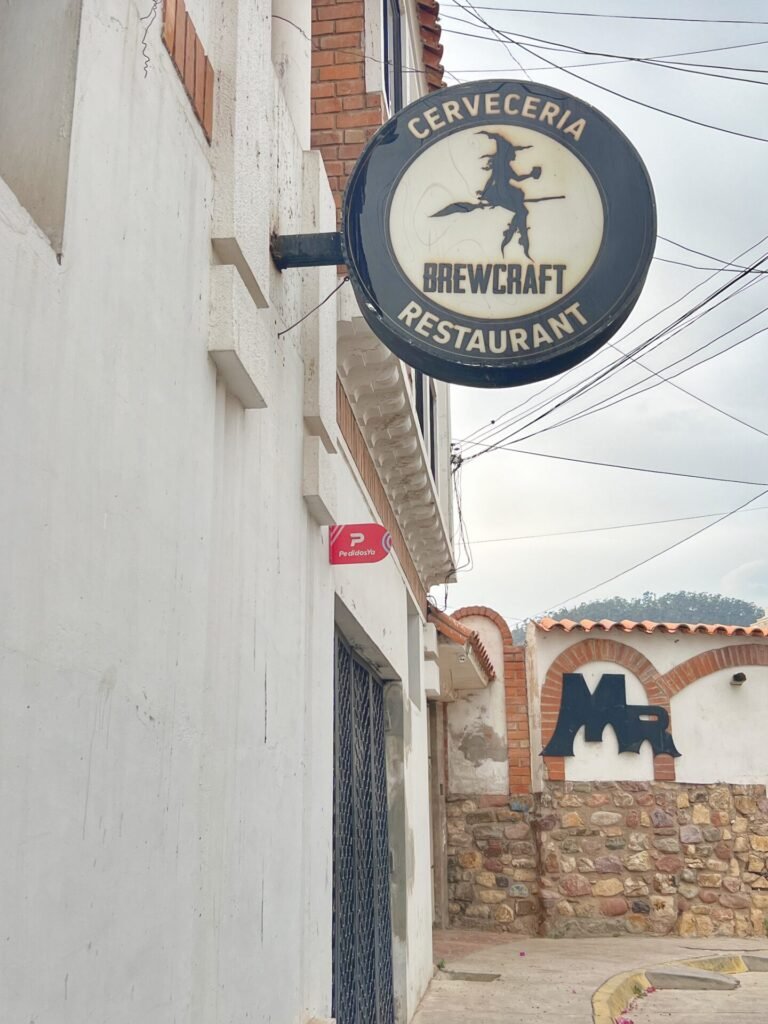
Exploring the city. Trying to find an open brewery wasn’t always easy.


The General Cemetery of Sucre is also a pleasant place to kill some time. It’s dotted with shady trees and a lovely granite walkway


What a unique tombstone! Or, if you prefer a more ostentatious option, it’s got those too.


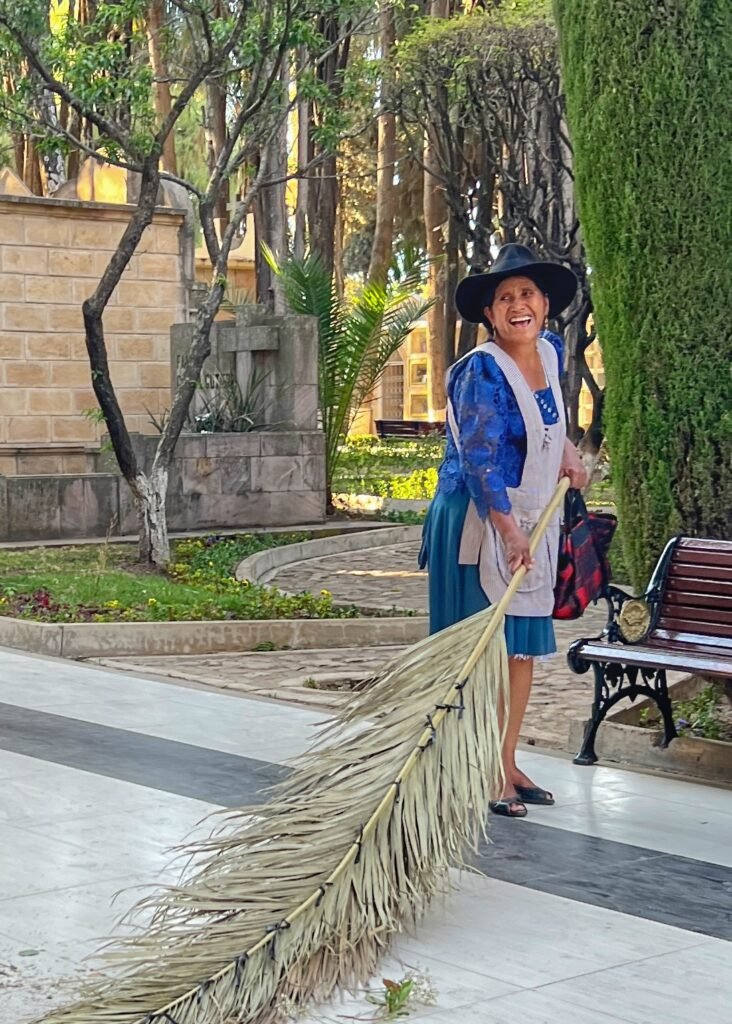
But this sweeper is clearly the least bit ostentatious. What a smile! This is actually the normal “brooms” they use in public spaces throughout Sucre.


We later went out with our Dutch friend Roos, and her boyfriend Bob. You may remember when we met Roos…she, her mom and sister were on our multi-day safari in Tanzania in 2019. They were an amazing family so we were ecstatic to bump into her here in Bolivia.

On another day we decided to do the steep hike up the nearby hill called Cerro Churuquella, which was a wonderful way to get away from the noise and bustle of the city. It took about 50 minutes to get there from the center plaza.

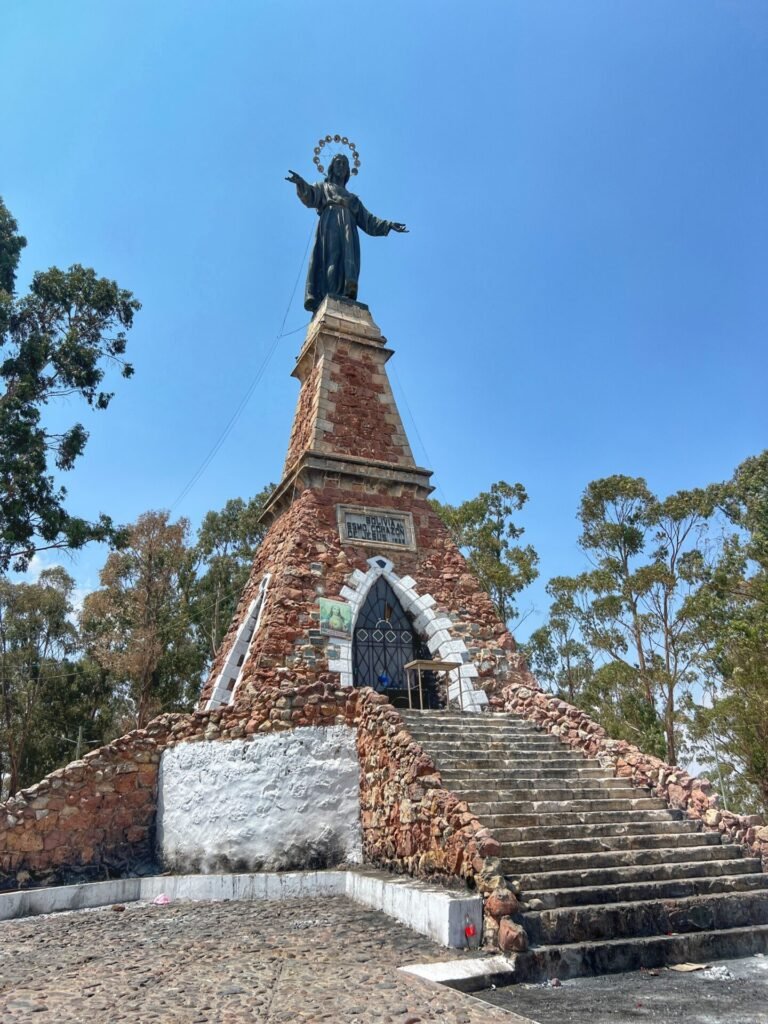

There are holy markers going up the length of the final staircase which signifies people may sometimes do this hike as a pilgrimage. At the top is the Sacred Heart of Jesus which was inaugurated for the centenary of Bolivia in 1925. And of course, there is a beautiful view of the city from this perch. Unfortunately, however, it seems that some Bolivianos are celebrating His holy name by lighting fires and trashing the place with broken glass and plastic. Quite a pity.



